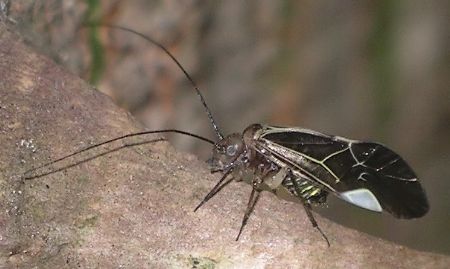by Valerie
May, 2005Barklouse Our featured animal this time is about as obscure as one can get and still have an insect that is large enough to photograph with a point-and-shoot digital camera. This is a barklouse (Cerastipsocus venosus) and I saw my first such creatures only this year. Barklice, along with the more notorious booklice, are members of the order Psocoptera. While booklice often live in houses, barklice are almost exclusively tree dwellers. The name is a bit misleading because these are not closely related to biting and parasitic lice. In fact, barklice cause no problems and are actually a minor segment of nature's clean-up crew, eating lichens and fungi off of the bark of trees. They resemble aphids, but have chewing mouthparts instead of a tube designed to suck plant juices. It is so rare to find a single barklouse that I was at first unsure of the singular version of the name. Barklice are gregarious and are usually found in large groups. Some kinds create webs to protect themselves and their young, but the species shown here does not. The group that I found on the trunk of our mimosa tree was a perfect example of their behavior: several hundred individuals milling about on the smooth bark, looking much like a herd of tiny sheep. In fact, another common name for these insects is "bark cattle." Barklice need humid conditions because their bodies are soft and small (less than ½ inch long, including the wings). Our unusually wet winter may have produced the favorable climate for them to appear for the first time in our yard. They have well developed wings, but rarely fly. Indeed, when I disturbed them, a couple flew off the tree but only went about a foot before they landed on nearby vegetation. The group was present in our garden for just a few days before disappearing. Their vulnerability to predation, small size, and lack of damaging habits make barklice a casual and benign curiosity. |